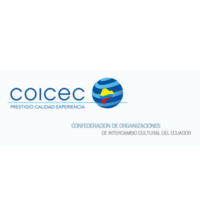Equality and Diversity in an Ethic Classroom
What are the definitions of equality and diversity that are useful in the context of an ethic classroom? This article is going to explore ways to promote equality and diversity in your teaching.
By definition, Equality means to recognise the right of all individuals and groups to be treated equally regardless of their age, gender, race, ethnicity, nationality, disability, sexual orientation, religion or beliefs. The definition of Diversity is recognising and valuing difference, which may refer to age, gender, sexual orientation, socio-economic status, physical/cognitive abilities, religion or beliefs, ethnicity/race/nationality or culture.
As an educator, your primary goal in the contemporary colourful and global world would be to facilitate the development of a set of practices that will:
- promote the possibility of fair and equal chances for all students to develop their full potential not only in the classroom, but in all aspects of life;
- and to facilitate the removal of all set barriers that may lead to a disadvantage experience by certain individuals or groups of students.
This is done through carefully planning your lessons strategically in advance and taking into consideration timetable assessment points. These are cultural events, holidays, festivals, and other important for the students and their families events. Another useful tip may be to ensure that all students’ needs and requirements are planned for and reasonable adjustments are made for all eventualities. You can also develop a resource box of materials representing a range of cultural, social contexts and images. In your means of communication with the students, consider the language used to make sure all the vocational or technical terms are explained clearly and in the proper contexts.
To maximise your effectiveness as a teacher or a university professor, you need to develop a productive relationship with your learners. You should dedicated some time and find out basic facts and information about cultural background, religious traditions, where are the students’ families from, etc.
We are very often subconsciously thinking stereotypes. As an educator, it is advisable to resist and challenge stereotypical thinking. An example may be that “Visually impaired learners are not interested in art.
The entire class will benefit if you encourage all the students to share information with you and the class on cultural, personal, social and religious traditions. This way everybody would benefit, learn something new, and engage in an interesting discussion.
It is important to evaluate all lessons in order to pinpoint all possible opportunities to embed awareness of equality and diversity. Recognise and try to use all these opportunities. It is extremely important that the teacher knows, questions, and discusses any references made by students that involve equality and diversity. Follow up any student references to equality and diversity issues. Questioning can be a powerful tool for embedding. For example, you may ask your students how are they going to deal if their neighbour is from another culture? Are they going to change their approach, language, expressions?
Consider inviting guest speakers to the course you are conducting. They are very often perceived as role models and have a powerful impact on students and on people in general. They can reflect a broad section of the society. Make sure to use a lot of images and videos and make example of practises, reflecting a broad section of the society.
Be aware that many teaching and learning processes may become very easily outdated over a short period of time. And what suits one group well, may not suit another. You should review your resources on a regular basis. When reviewing your materials, you should ask wether the resources and processes are inclusive and accessible to all learners. Do they draw on the potential experience of all your learners? Thus, promoting and celebrating diversity. Are you confident that your resources do not reinforce stereotypes or discriminatory practices?
How are you coping with diversity in the classroom? We would love to hear from you in the comment section below!
If you are interested to learn more about diversity and equality, browse through our article on Achieving Diversity Part 1: The Needs of International Students.
















